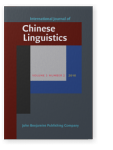Vol. 3:2 (2016) ► pp.245–269
Elastic language in TV discussion discourse
A case study of ba in Chinese
This paper investigates the elasticity of the pragmatic particle ba in Mandarin Chinese, based on TV discussion data. It provides refreshing theoretic explanations of ba: the elasticity manifests through fluidity and stretchability of ba’s meanings and functions, and its strategic use. Ba has the general meaning of ‘a change of tone in an utterance’, which can trigger three pragmatic meanings (and functions) in context: mitigating (most frequent), boosting (least frequent) and soothing. These three meanings stretch upwards (boosting), downwards (mitigating) or sidewise (soothing) to serve the needs of communication. Ba is sentence-type and text-type specific; the cluster shiba shows the overlapping characteristics of the embedded declarative and interrogative forms.
